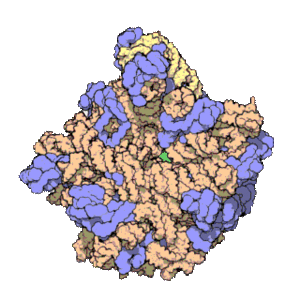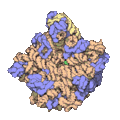Non-coding RNA facts for kids
A non-coding RNA (ncRNA) is a functional RNA molecule which is not translated into a protein. Less-used synonyms are: non-protein-coding RNA (npcRNA), non-messenger RNA (nmRNA) and functional RNA (fRNA). The term small RNA (sRNA) is often used for short bacterial ncRNAs. The DNA sequence from which a non-coding RNA is transcribed is often called an 'RNA gene'.
Non-coding RNA genes include abundant and important RNAs such as transfer RNA (tRNA) and ribosomal RNA (rRNA); also RNAs such as snoRNAs, microRNAs, siRNAs, snRNAs, exRNAs, and piRNAs and the long noncoding RNAs (long ncRNAs). The number of ncRNAs in the human genome is unknown. However recent studies suggest the existence of thousands of ncRNAs., but see Since the function of newly identified ncRNAs has not been proved, it is possible that many are non-functional.
The first non-coding RNA to be analysed was an alanine tRNA found in baker's yeast. Its structure was published in 1965.
Images for kids
See also
 In Spanish: ARN no codificante para niños
In Spanish: ARN no codificante para niños






